Spring is here and with it comes elm samaras: a tree seed you can eat that tastes like fresh green peas, and one of the most unique wild edibles available to foragers in the spring.
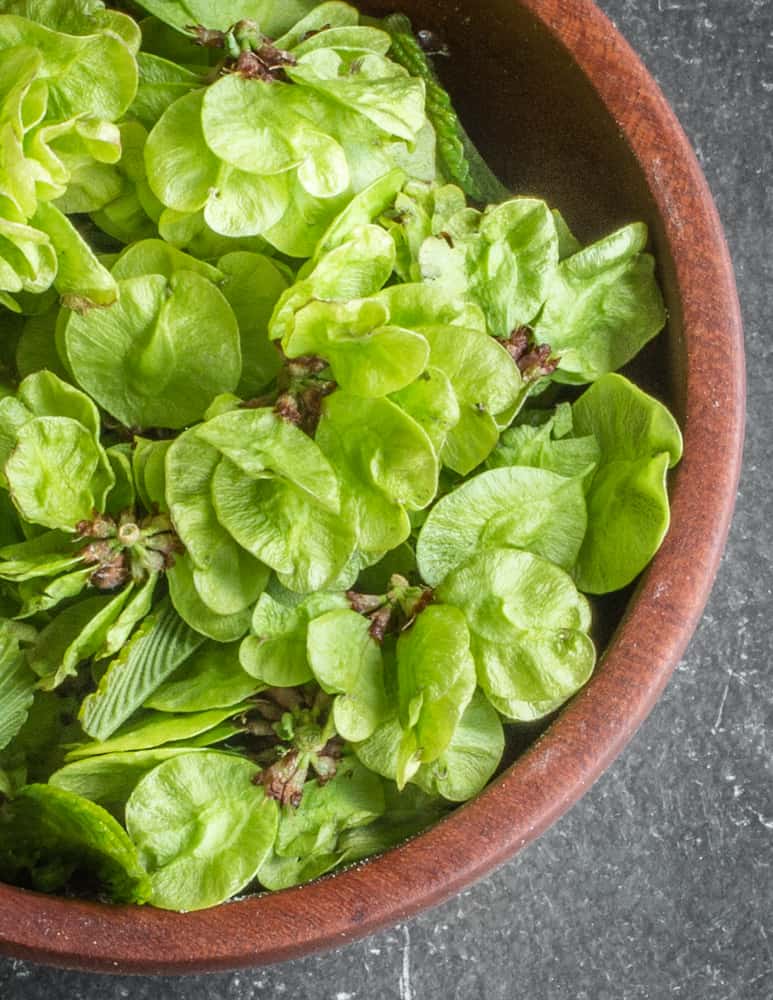
Today I'll share with you what I've learned about these over the past few years of gathering. I'll go over how and when I harvest, as well as how I cook with them.
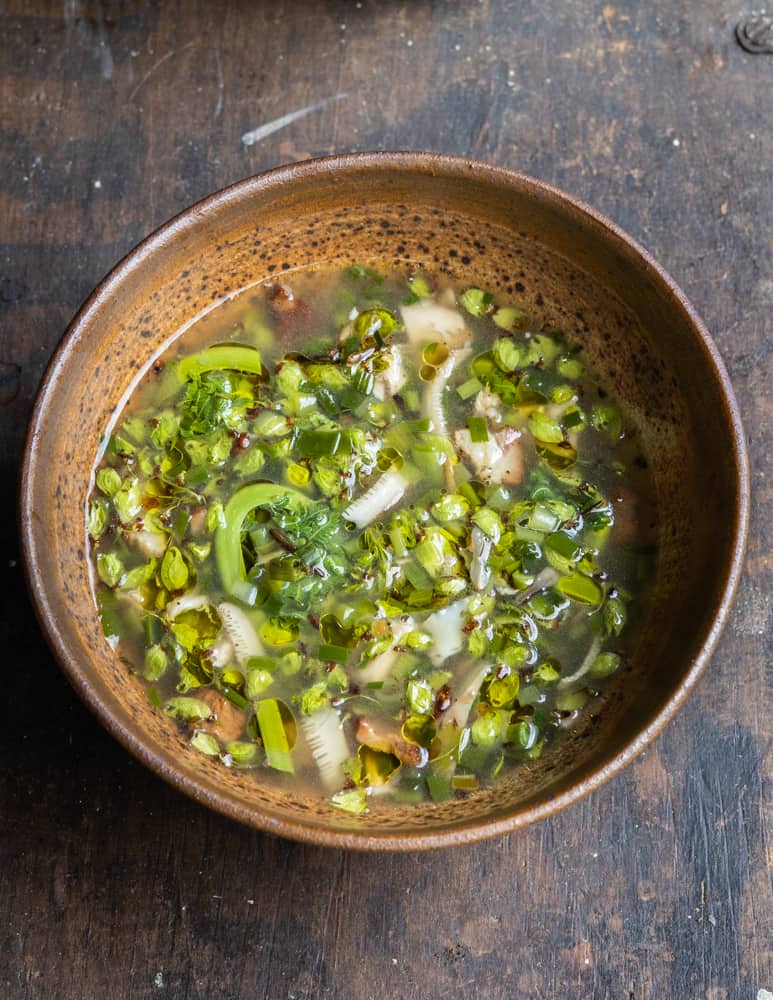
The seeds of elms are called samaras. All elms I've seen have seeds that are edible, but, for the purposes of this post, I'm going to focus on Siberian elm samaras (Ulmus pumila) as they're the best I've had.
Sam Thayer says Slippery elm (Ulmus Rubra) seeds are equally good as good as Siberian elm. I've been told other species like Chinese elm (U. parviflora) are good too, but they're not as widely available.
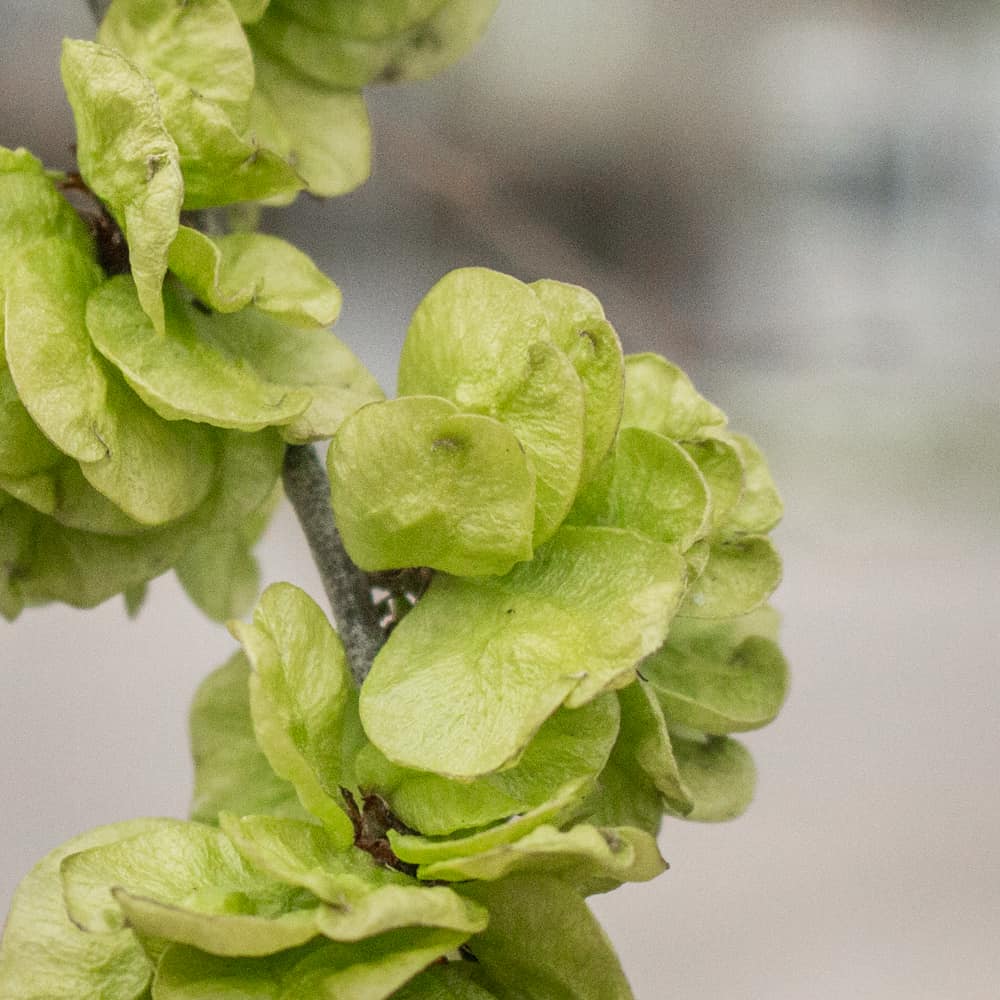
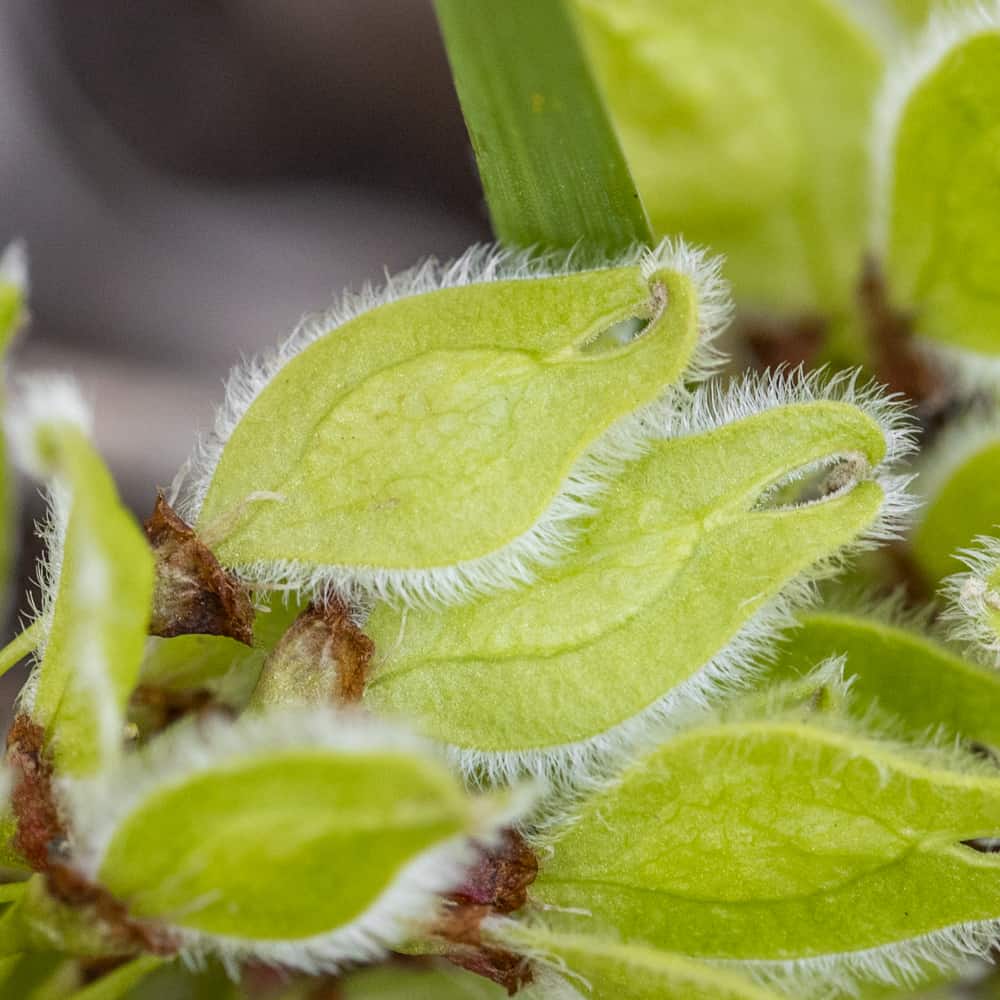
The only others species of elm samaras I've had are American (Ulmus americana), which aren't quite as good as Siberian elm. American elm samaras have more tiny hairs and are smaller than the rounded, winged fruit of Siberian elm.
Sam Thayer writes that some people have reported developing an allergic reaction to American elm samaras, so make sure to try small amounts if those are the only ones available to you.
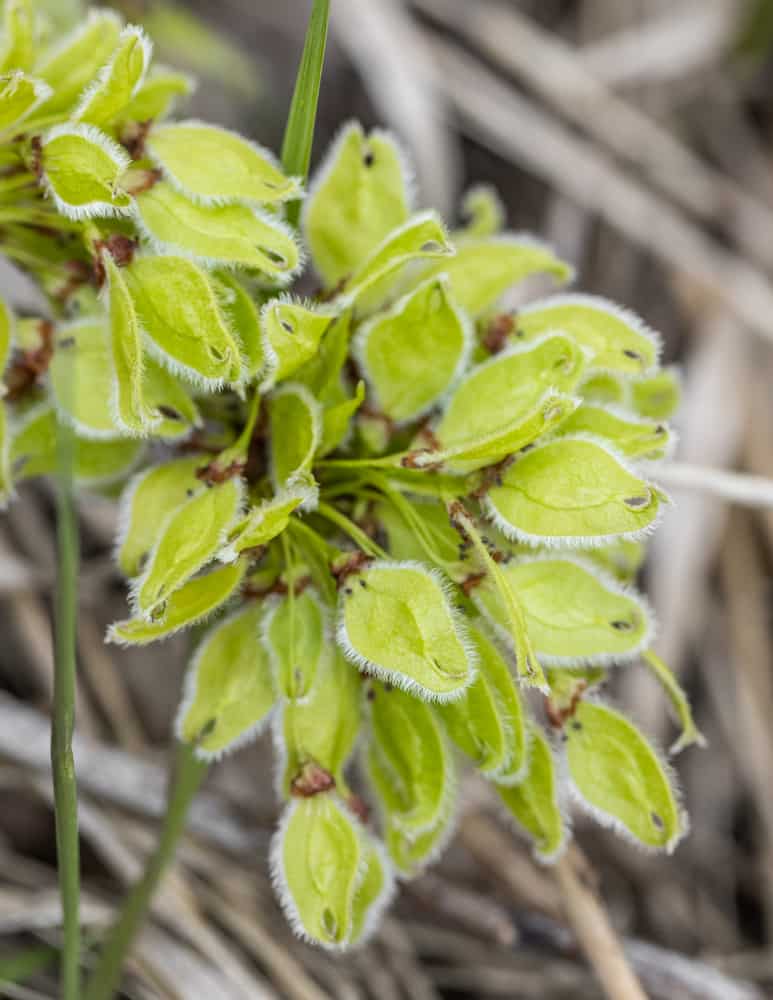
Siberian elm: An invasive edible
Sustainability is a big topic in the foraging and wild food world. The good news about samaras is that arguably the best tasting ones come from an invasive tree.
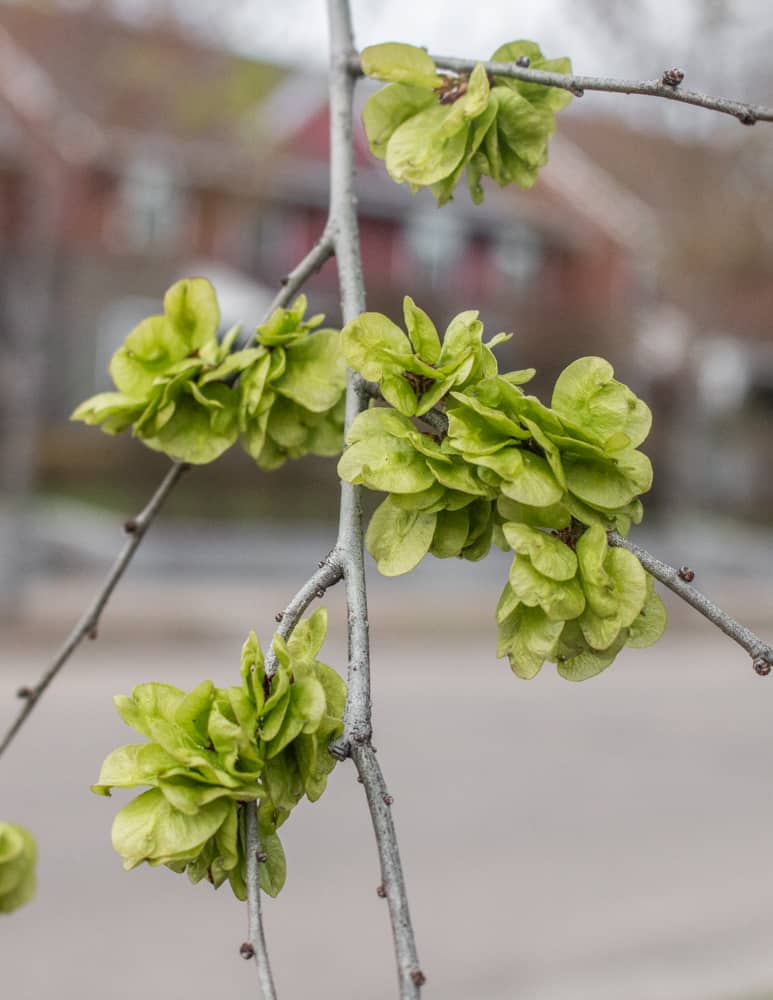
As Sam Thayer writes in the Forager's Harvest, Siberian elm trees were brought to the U.S. in the 1860's from Northeastern Asia. The tree is rugged, hardy, and, unlike American elms, resistant to Dutch Elm Disease. Now, if only those invasive trees could start producing morels!

Hunting and Harvesting
The harvesting window is very short for these, so you need to work quickly. On a good year, I can easily harvest a couple grocery bags full of samaras in an hour from one or two trees, but timing is crucial.
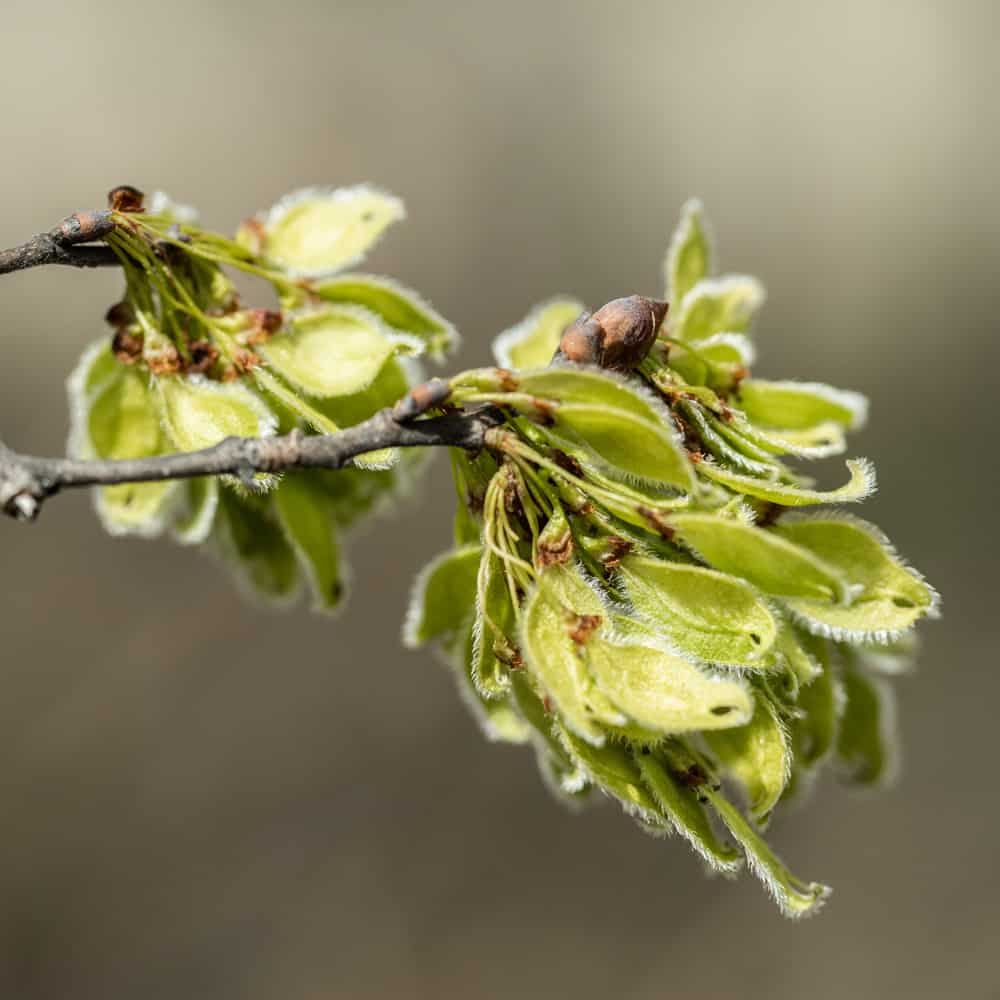
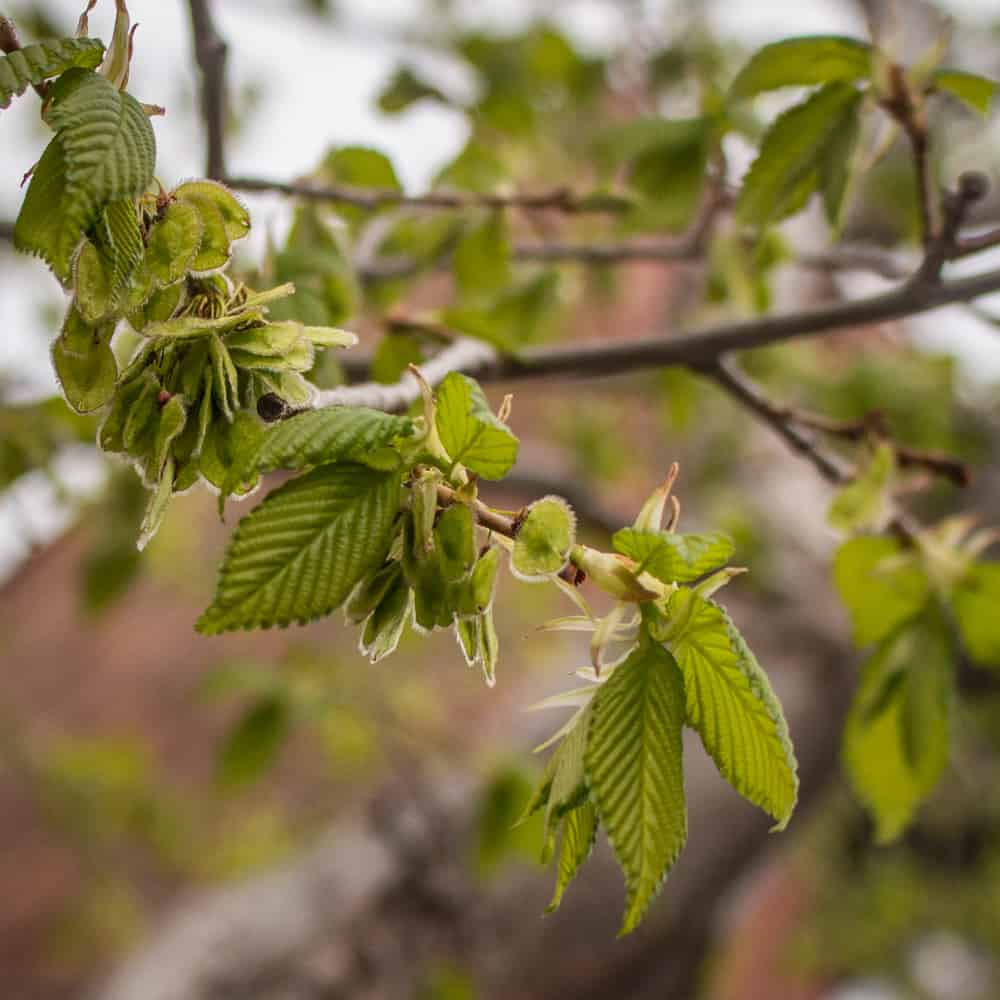
Here's some quick tips I think are helpful.
Quick tips
- You're looking for trees right as the leaves begin to unfurl. For me this is usually Mid-April, depending on the year.
- Walk on the edge of the woods, sunny fields or trails. The trees there will have lower branches you can reach. As these trees get more sun, they give the largest amounts of samaras, from my experience.
- Choose light-green, tender samaras in bountiful clusters without too many elm leaves. Fruit with tough or papery wings are too old.
- U. pumila is often planted as an ornamental or shade tree. Sometimes I'll harvest from trees on the street if it doesn't see much traffic (pollution).
- When they're ready, hit all of your spots. My areas produce for one week.
- I bring a metal coat hanger, uncurled, and use the hook part to gently lower hard to reach branches.
- Bring a blickey or a container you can secure to a belt. Having two hands free will double your harvesting speed.
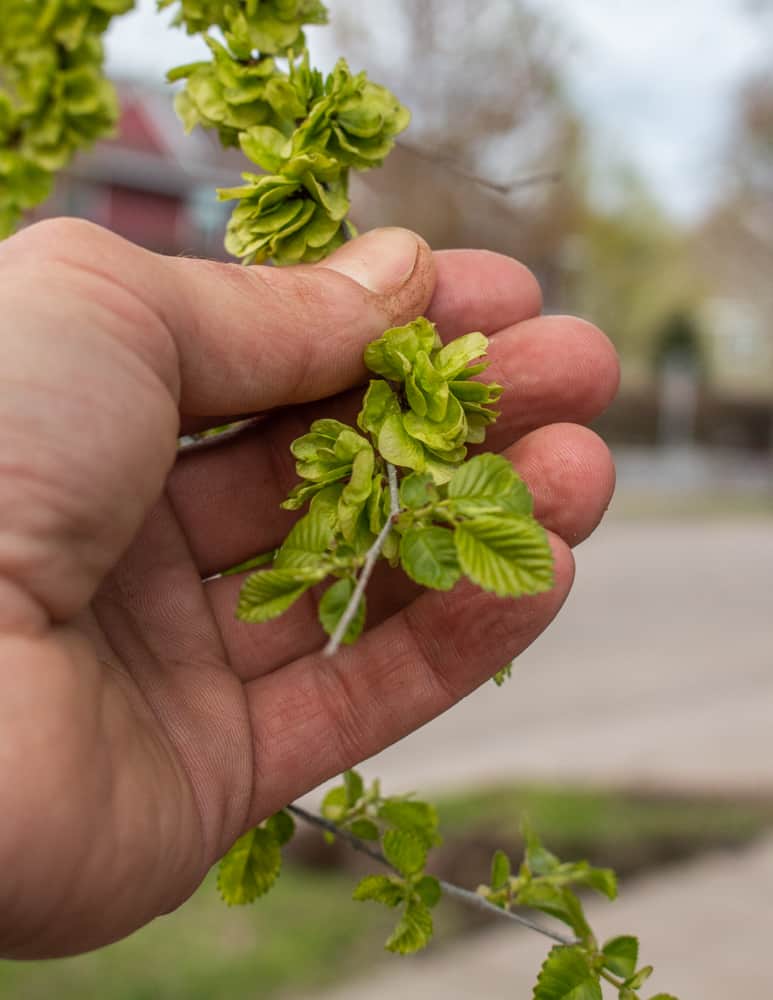
Cooking
Once you bring them home, you want to chill the samaras down by putting them in a zip-top bag in the fridge. Don't forget to channel your inner deer by stuffing your mouth full once or twice. They'll never be fresher than the moment you pick them.
Dried seeds
Besides eating fresh, you can also collect the fruit to harvest the central seed. Some people have compared the nutty taste to sunflower seeds. I don't doubt they're good, but processing these is a lot of work for a little return, so I don't see myself trying that any time soon.
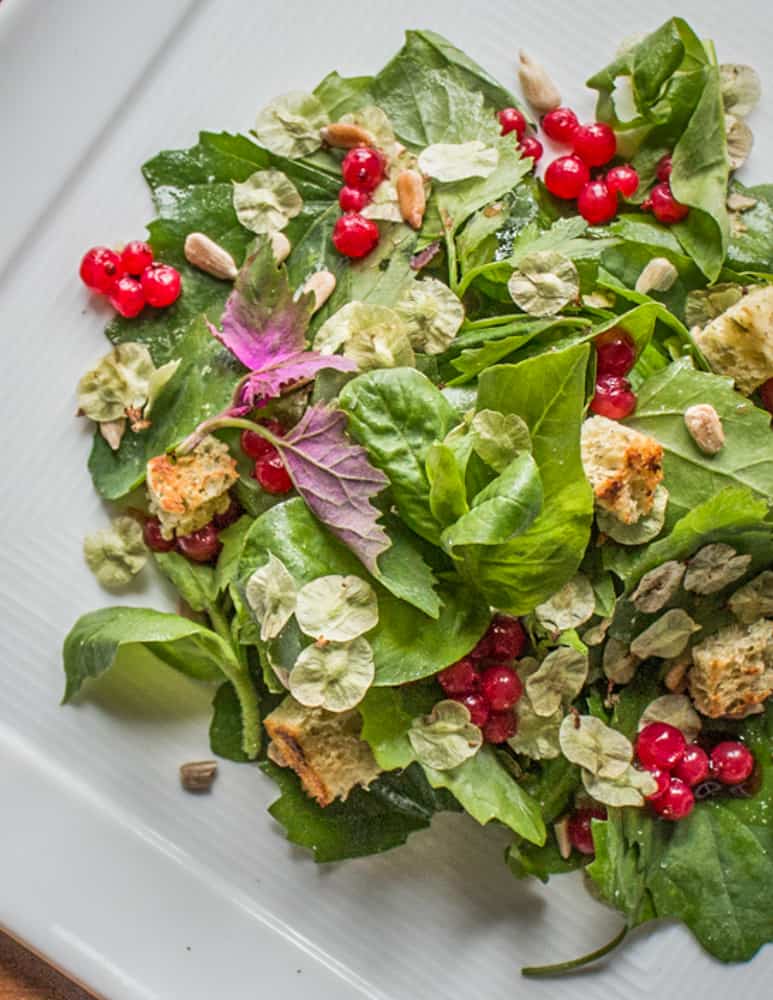
The way to eat
The golden nugget of wisdom I have to share with you here is a mindset, not a harvesting hack. Samaras are small, and there's a difference between having a couple as a trail nibble or putting a few on a salad, and eating them like a vegetable.
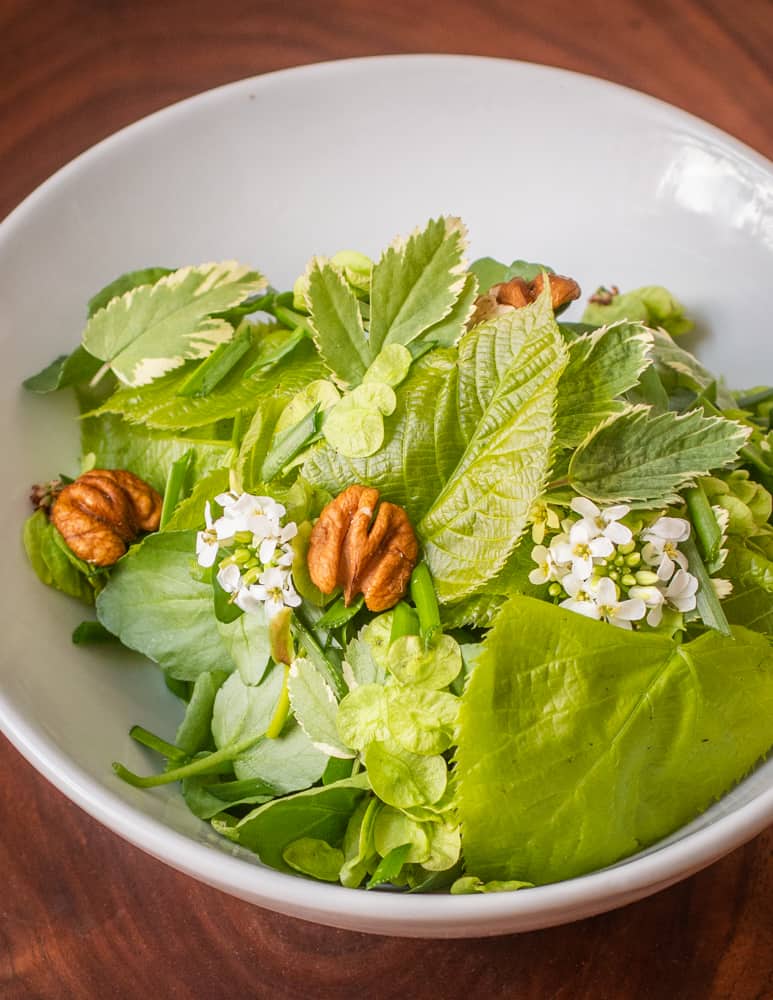
To really appreciate them as more than a garnish or a cute sprinkle, you need a bunch. I recommend starting with at least a gallon bag.
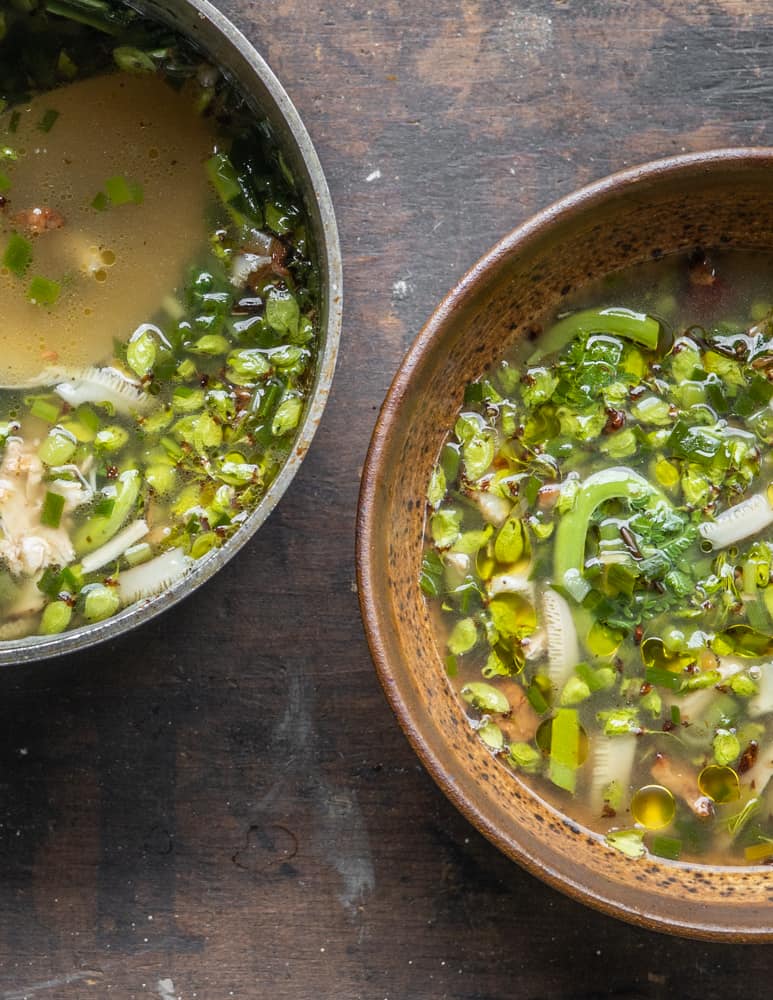
The real beauty of this fleeting, gourmet ingredient is hard to appreciate until you eat them in a portion similar to other foods. You can eat them in salads, and they're good, but cooking opens up a new world.
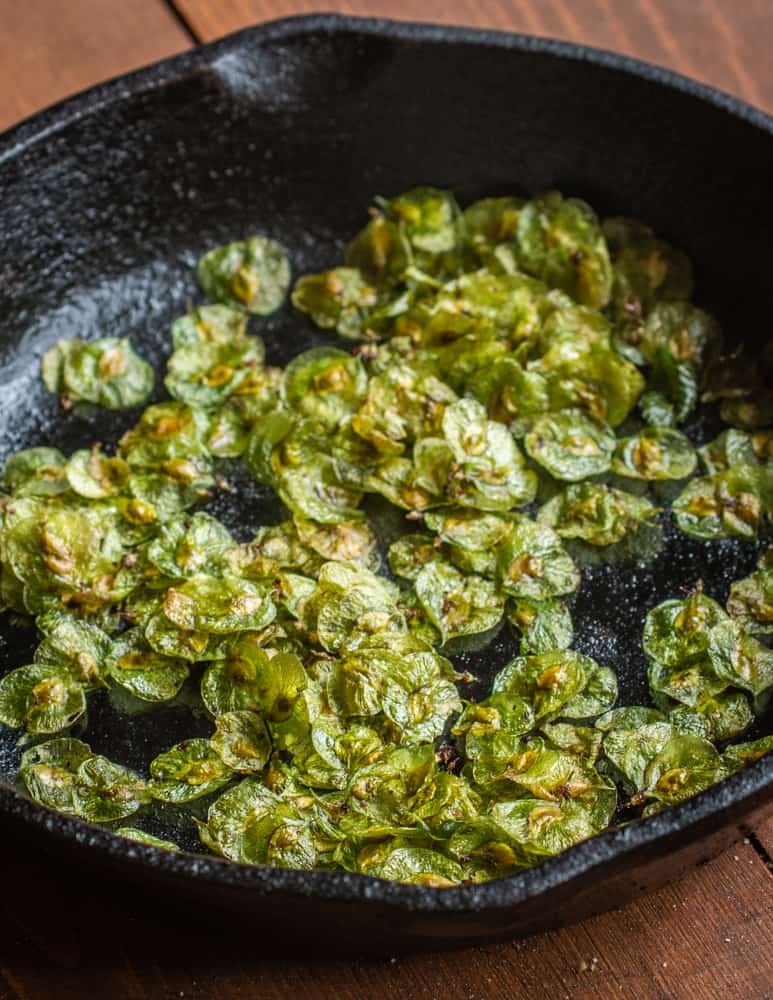
If I cook samaras, it's usually in soup or broth. Toss them in at the last minute and watch their color transform to a vibrant green. Lightly oiled and toasted on low heat they also make a fun garnish or snack (see above). They'd also be great tossed into sauteed asparagus and mushrooms at the end of cooking.
The tender, papery covering softens and reminds me a bit of tiny pasta I used to chase around my bowl as a kid. To me it's a bit like eating elf food, and the kind of eating spring is all about.
Related Posts
Pheasant Back-Spring Vegetable Soup

Jacqui
According to my expert source, elm samaras are called « manna » as in « from heaven » in Denmark and are, or at least were, a typical snack for kids going to or from school, just pulled off the trees.
Alan Bergo
That fits!
Mei Xian
I never knew the name (samaras) but I admit to nibbling!
Lucas
Any possibilities for storage? Or are they pretty much collect and eat.
Alan Bergo
Hey Lucas. They’re actually very durable and I need to add some info on that to this post. They can be stored for weeks if they’re in a container with a tight fitting lid or a zip loc. I have also dehydrated them to add to soup which is fun.
CN
I love bio photography and just took some fun macro pictures of these little beauties. Little did I know I could eat them. Looking forward to next year!
Alan Bergo
Hey thanks CN.
Patty Payant
I've been nibbling on these Chinese Elm seeds since I was a kid! With your inspiration, I'm adding these to my yearly foraging repertoire. Today I made oatmeal with sunflower seeds, pumpkin seeds, walnuts, & dried cranberries. I cooked this in the microwave with the minimum of water needed till just about done, then added some of the green Chinese Elm seeds and microwaved it for 1 more minute. What a beautiful bowl that produced. I then drizzled my morning Keifer milk over the top. It was truly an amazing dish! And what a delightful way to add some greens to my breakfast. Tomorrow I will try frying some up till they are crispy as a topper for some hummus! Thank you!
Alan Bergo
Hey thanks for sharing Patty that sounds great. There's so many ways to use them.
Betsy True
Also the Camperdown elm in my yard has edible samaras.
Kelly Chadwick
Grateful for this enlightening rundown on Elm samaras. Surprised I didn’t realize it. Will employ
Marilyn Buss
That is something I'd like to try. We are a little short of elm trees here in Northern CA. Is there a similar seed from other trees, like Bigleaf Maple or Oregon Ash?
Alan Bergo
I know some people cook with maple blossoms. I haven't yet.
Janelle
Help please! Can the sprouts be eaten like micro greens? I have a huge elm in my yard and the Samaras are difficult to harvest since nothing is arms reach. Then the sprouts pop up everywhere, often in little clusters. I've been giving them to my chickens, but just now I decided to try them as micro green on avocado toast. However, I've never officially heard of the sprouts being edible. Please advise! Thank you!
Alan Bergo
I’ve eaten the young leaves of elm trees and plenty of samaras. In don’t know if this is referring to sprouted elm samaras or very young saplings but neither would hurt you-they just might be a little tough.